
- Episode.8 「世界で評価される馬革専業タンナー『新喜皮革』」
- Episode.7 「ロマンと科学で紡ぐ”XX”の遺伝子 Vol.4」
- Episode.6 「ロマンと科学で紡ぐ”XX”の遺伝子 Vol.3」
- Episode. 5: The DNA of “XX,” Interwoven with a Spirit of Adventure and Science – Vol. 2
- Episode.5 「ロマンと科学で紡ぐ"XX"の遺伝子 Vol.2」
- Episode.4 Starting “XX” Reproducing Project. Vol.1
- Episode.4 「ロマンと科学で紡ぐ"XX"の遺伝子 Vol.1」
- Episode. 3 Vintage Wool Blanket Making Revives in Modern Times Vol. 3
- Episode.3 「現代に蘇るヴィンテージウール Vol.3」
- Episode.2 Vintage Wool Blanket Making Revives in Modern Times Vol. 2
- Episode.2 「現代に蘇るヴィンテージウール Vol.2」
- Episode.1 Vintage Wool Blanket Making Revives in Modern Times Vol. 1
- Episode.1 「現代に蘇るヴィンテージウール Vol.1」
Episode. 3 Vintage Wool Blanket Making Revives in Modern Times Vol. 3
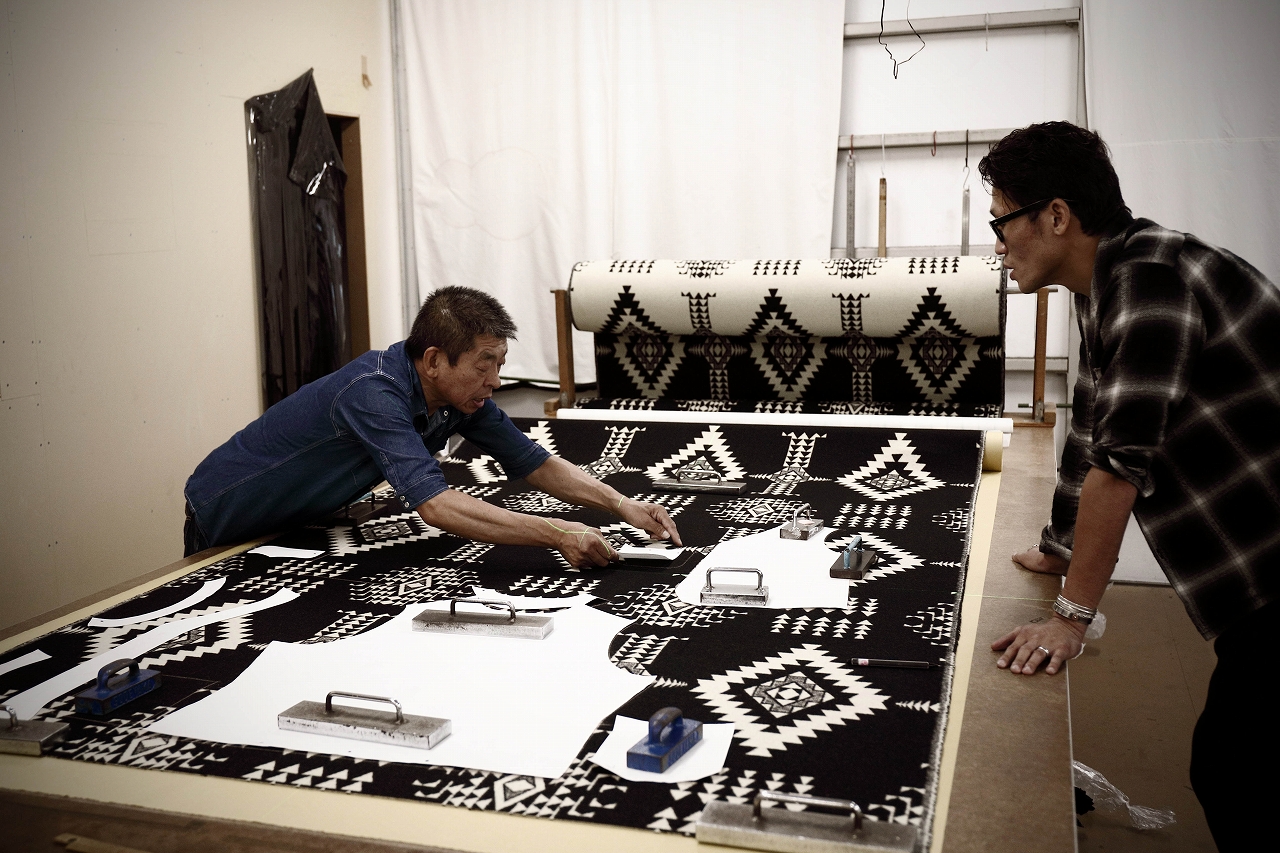
If we set American Vintage as “products coincidentally born from eras”, Products which JELADO pursues could be called “tenacity that makes fortuity into certainty.” Since JELADO has a respect of American Vintage which should be called a natural monument left of the earth, they find inevitabilities even in the past accidents and earnestly chase the quality as “contemporary product”, not “simple imitation.”
Therefore, sometimes JELADO products have specifications that don’t exist in American Vintage. This simply and highly accurate pattern matching which we are introducing in these reports is a good example. Even the difficulties are high, they find a meaning in shaping things for their end users who live “current”, so that the users can feel the quality of “current product.” If you look through these reports, you would understand their passion.
Now, in this third report, I will tell you how the fabric processed in “Step 8 Press” in the previous report is cut and sewn to complete as a product. Where I visited is a company, called Alpha Corporation which takes care of cutting and sewing for numerous high brands which acquire solid reputations internationally. I will deliver you the final chapter of the pride-relay by the leading Japanese professionals in Bishu, one of the world’s three largest woolen textile production areas.

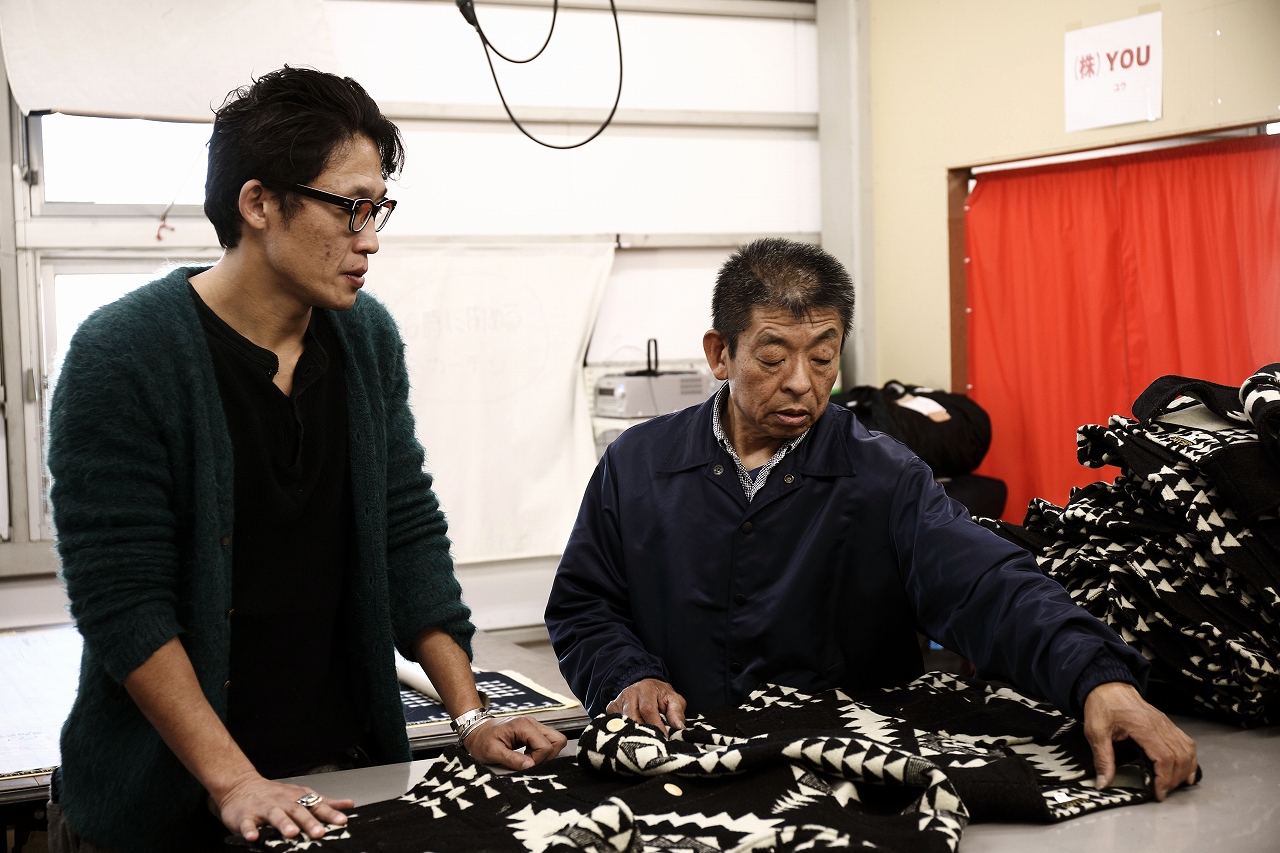
Step. 9 “Pattern Papers Placing“
The first thing after the finished fabric arrives at Alpha Corp. which takes care of cutting and sewing is to verify how to cut in parts to assemble into one product. Placing pattern papers on the fabric looks easy at first glance, but it is very difficult because it’s necessary to put them on carefully, so that all the patterns are matched perfectly when they became a product. They need to think how to take those parts with picturing 3D complicated sewing images and 2D cutting images in their heads. I feel faint when I imagine how they conduct this process.
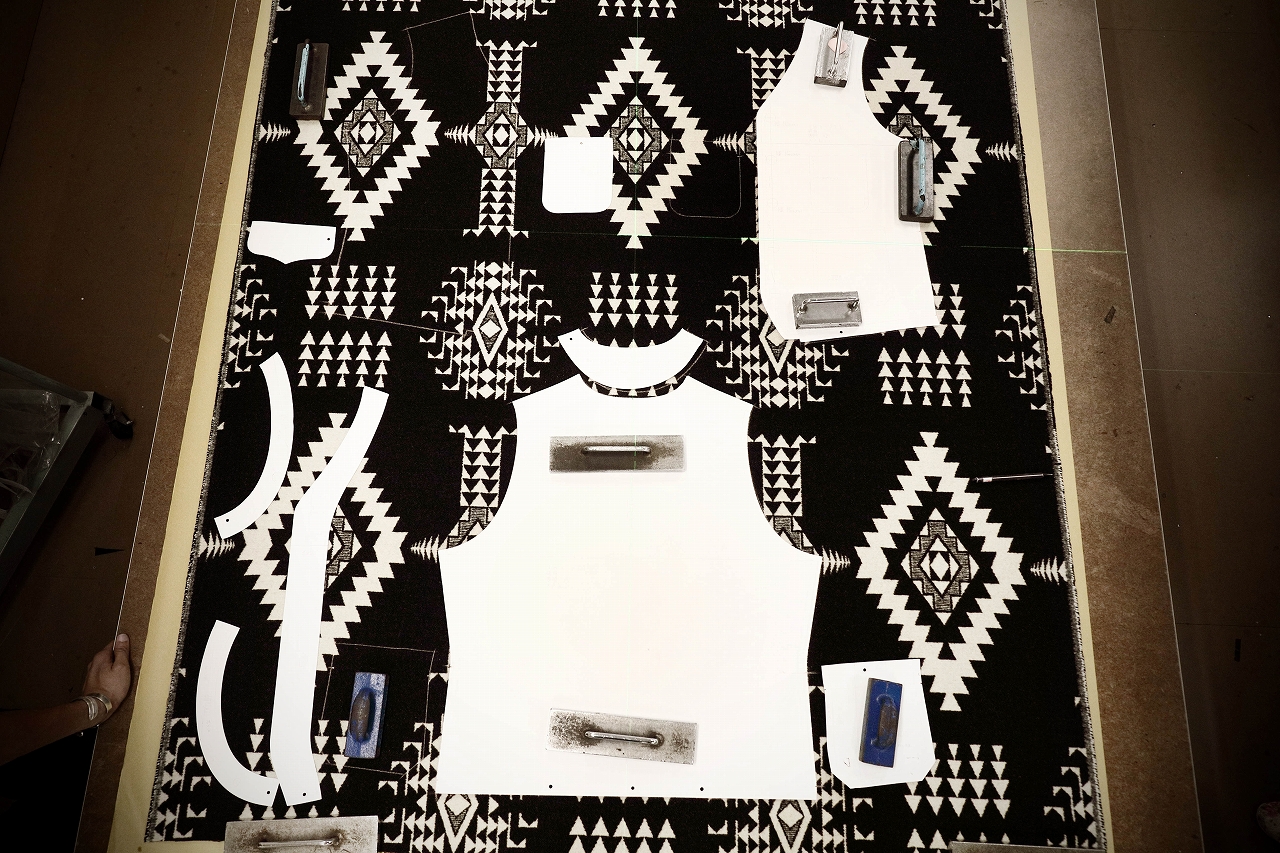
“It’s also important to use up the valuable fabric with no waste.”
“Basically, we place large pattern papers first, then place small ones based on the pattern arrangement. However, in case the pattern design pitches are wide such as the fabric we introduce, and if we don’t place pattern papers properly, it creates a lot of fabric loss, so this is the most difficult point.” Says the craftsman, Mr. Yonekura. Also, because tiny shifts make a bad effect to after-process, they always irradiate laser on the fabric to eliminate the shifts, but it’s still hard to keep the accuracy with considering shifts created by the wrinkles of the fabric.
。
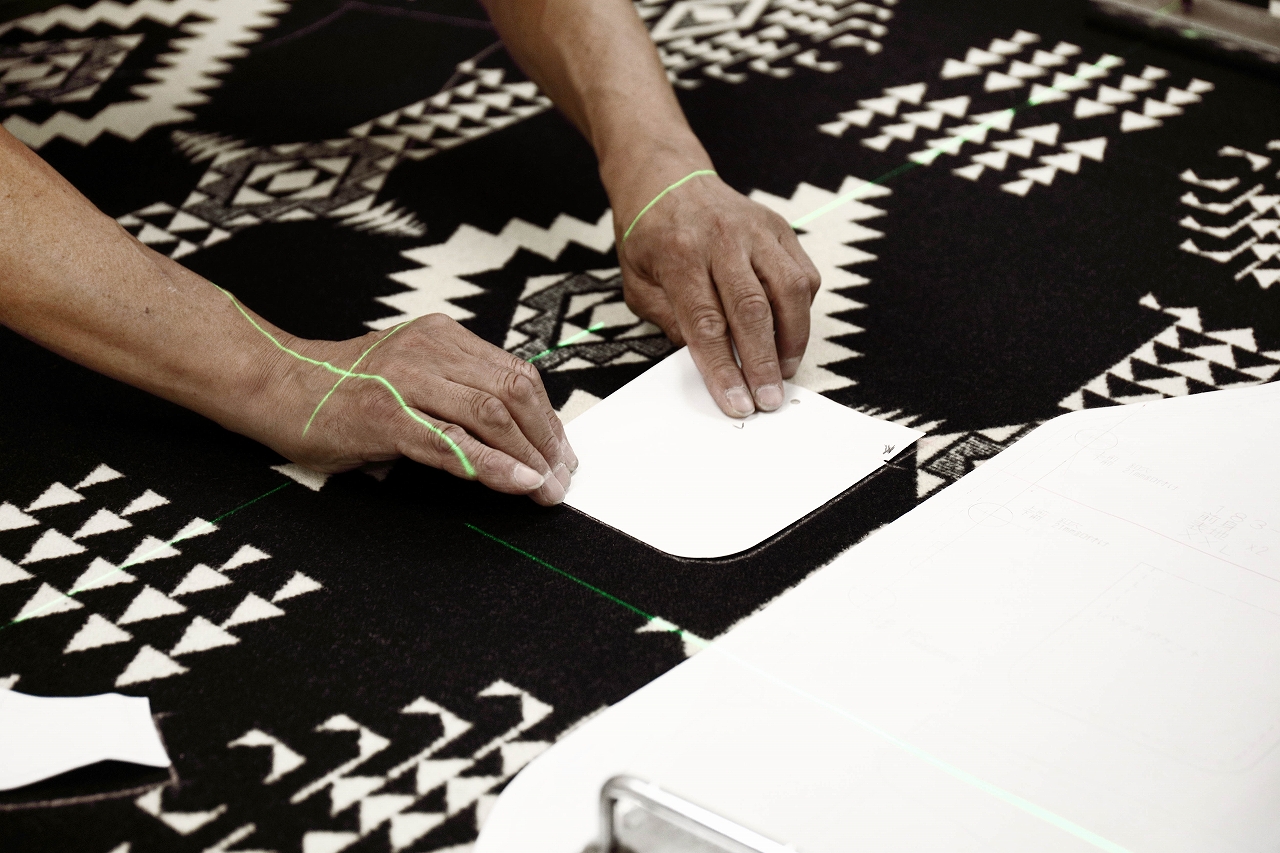
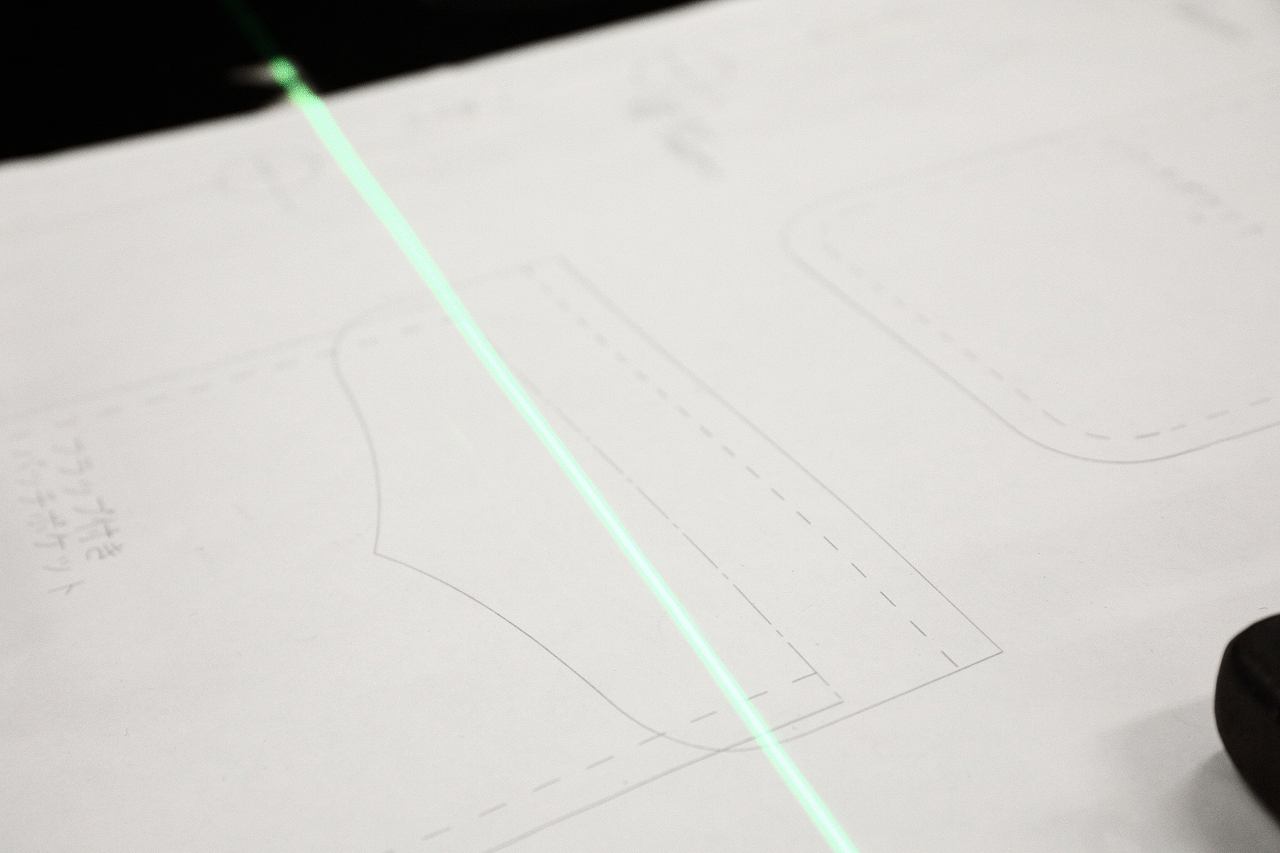
Step. 10 “Cutting Preparation”
After the pattern papers are set, cutting process starts finally. First, the craftsmen pile pattern-transferred papers on the fabrics, but there is a big obstacle in this process to bother the craftsmen. Only wrinkle condition on each Tan(about 50m) doesn’t bother the craftsmen, but there is also a case that weaving tension is different in each Tan, so they need to adjust the locations of the papers each time.
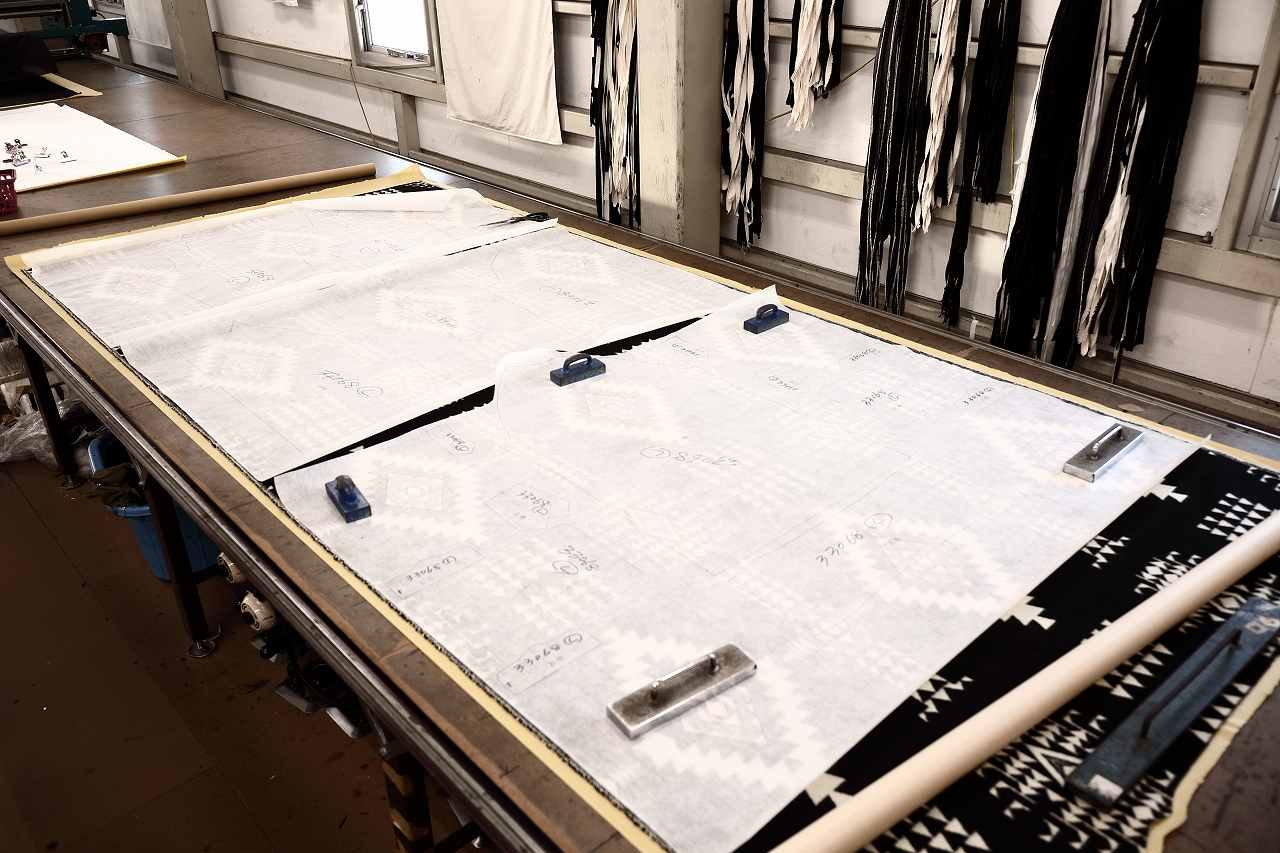
This fact means that, for example, when cutting twice, tiny shifts occur between the first and second cut, so if they mix up the first and second ones during the sewing process, the patterns become slightly mismatched when the product is completed. Therefore, they need to put matching numbers on every pattern and at the sewing process, they have to sew the pattern in set.
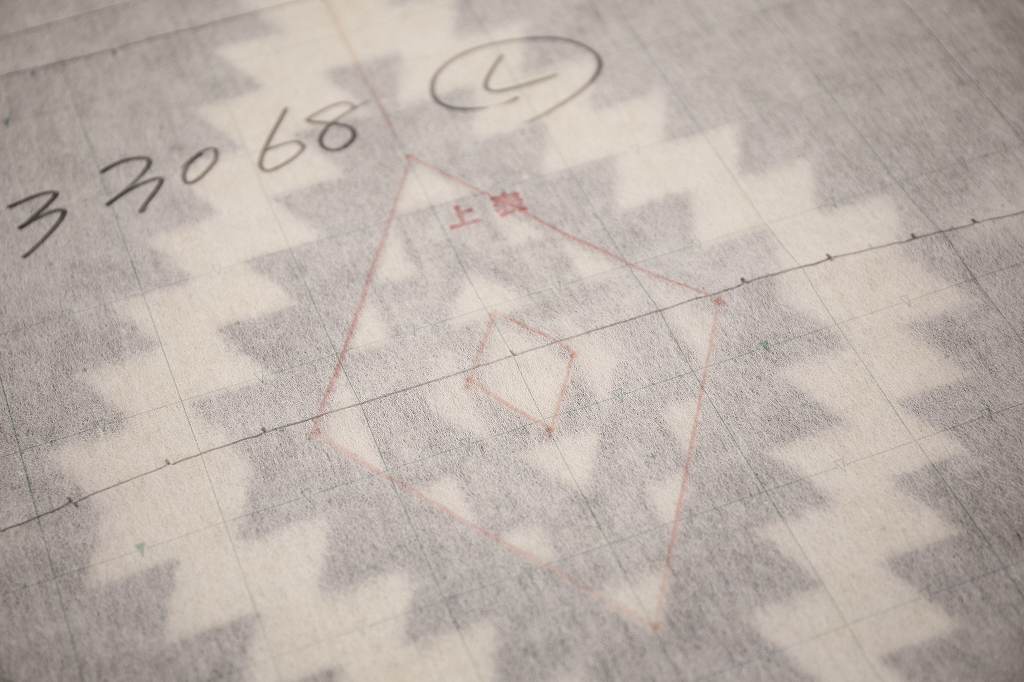
Also, in case of cutting thin fabrics which don’t need to be pattern-matched, they can be piled with tens or hundreds unit and cut at one, but nap-raised wool fabrics which have a thickness and wide design pitches which is likely to have gaps created by wrinkles affected by temperature and climates can be cut with very low piling, so it’s very inefficient. Therefore, before cutting, the fabric is divided into three to make the adjustment of the gaps easier.
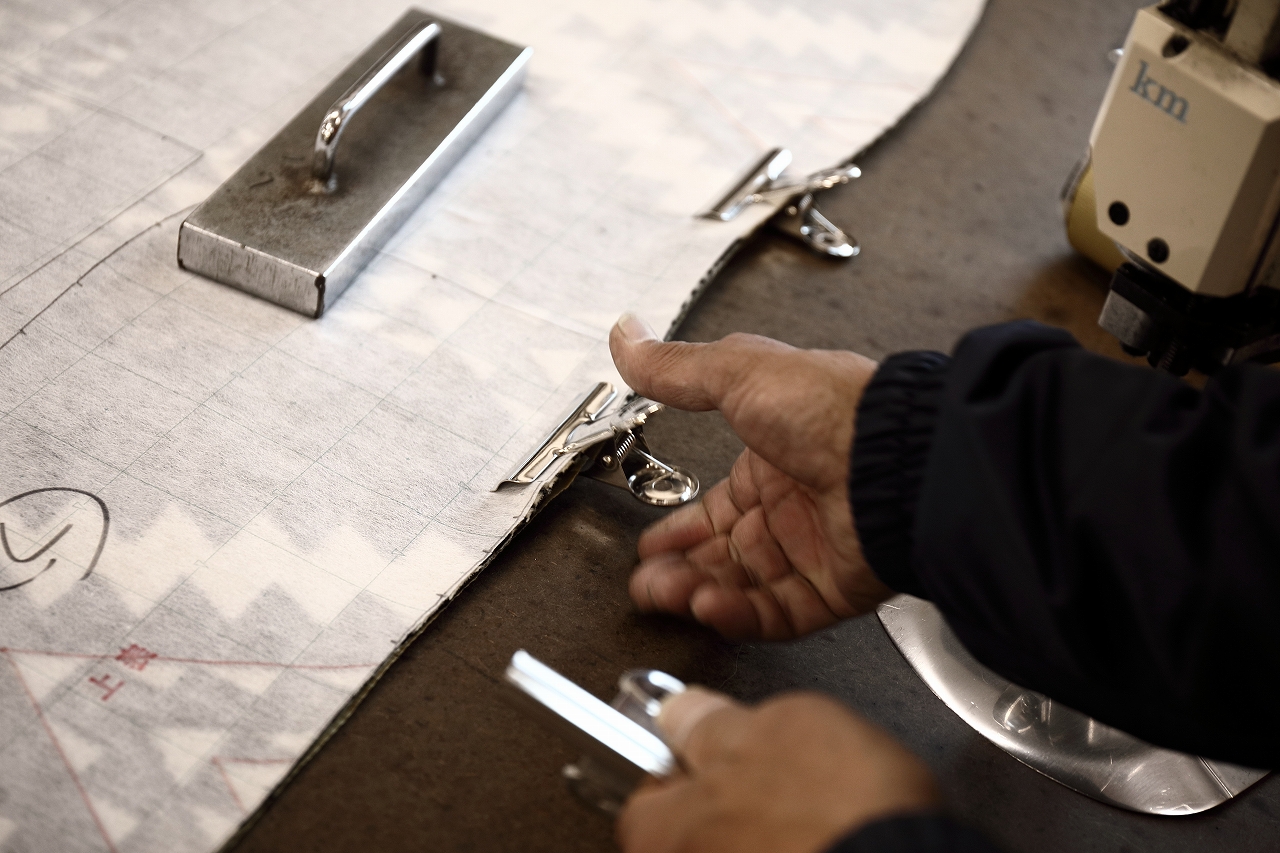
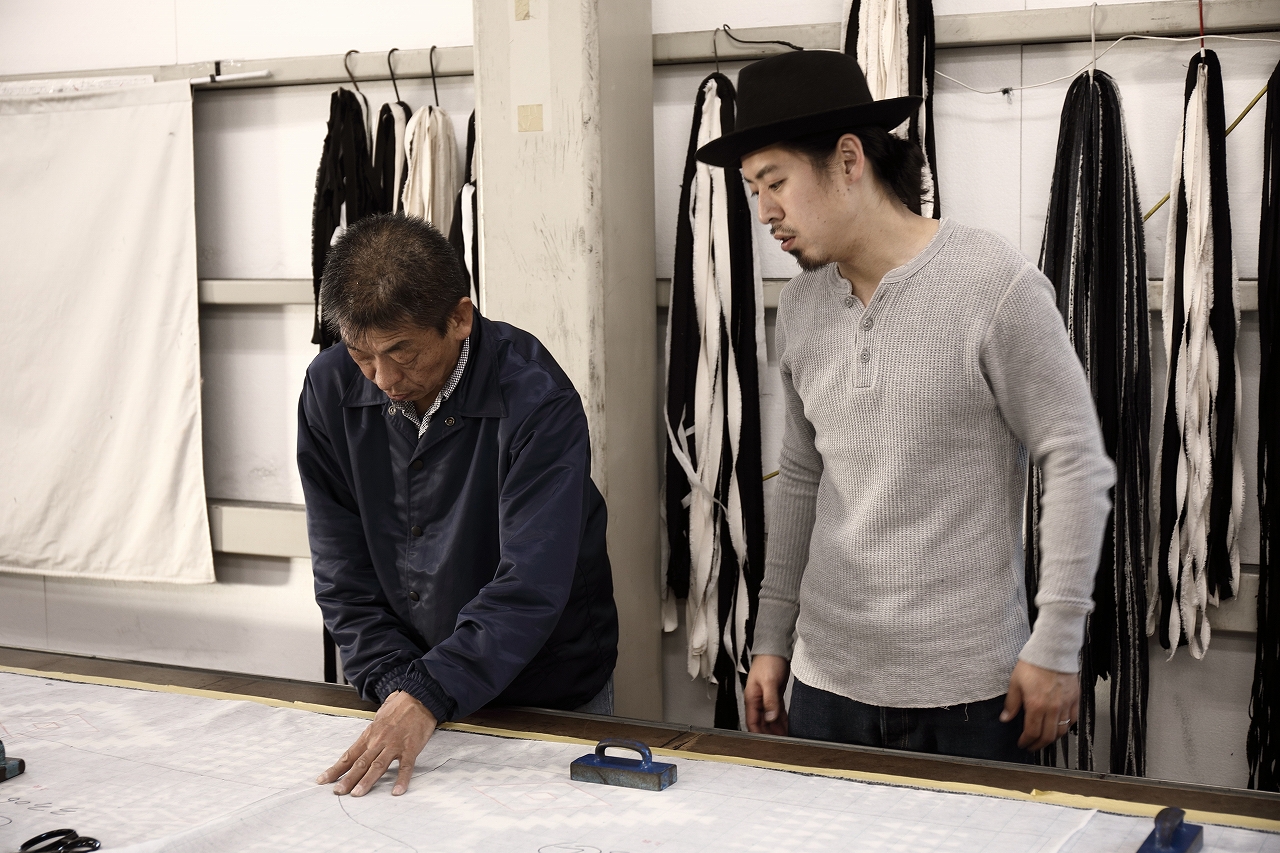
"I don’t know why, but I’ve never thought I don’t want to do this extra work.”
“I’m often told by people around me that it must be tough to produce time-consuming products such as the product this time in same way over and over, but we don’t actually think this process is a repeated process. Because even it looks same process if the fabric has even one difference in its condition, the process would be completely different from previous one and that will be a good stimulus for us.” Mr. Yonekura says.
Step.11 “Cutting”
Since cutting process requires sensitive work with care of fabric thickness and patterns, there is only one cutting machine they can use for that’s free hand cutting type. Their single stroke cut line is like god’s work, so the curve line and complicatedly shaped part lines are beautifully done as like machine work. Although the work is smoothly conducted, they need to check and adjust gaps each time. Therefore, the number of jackets that can be cut per day is limited to a few.
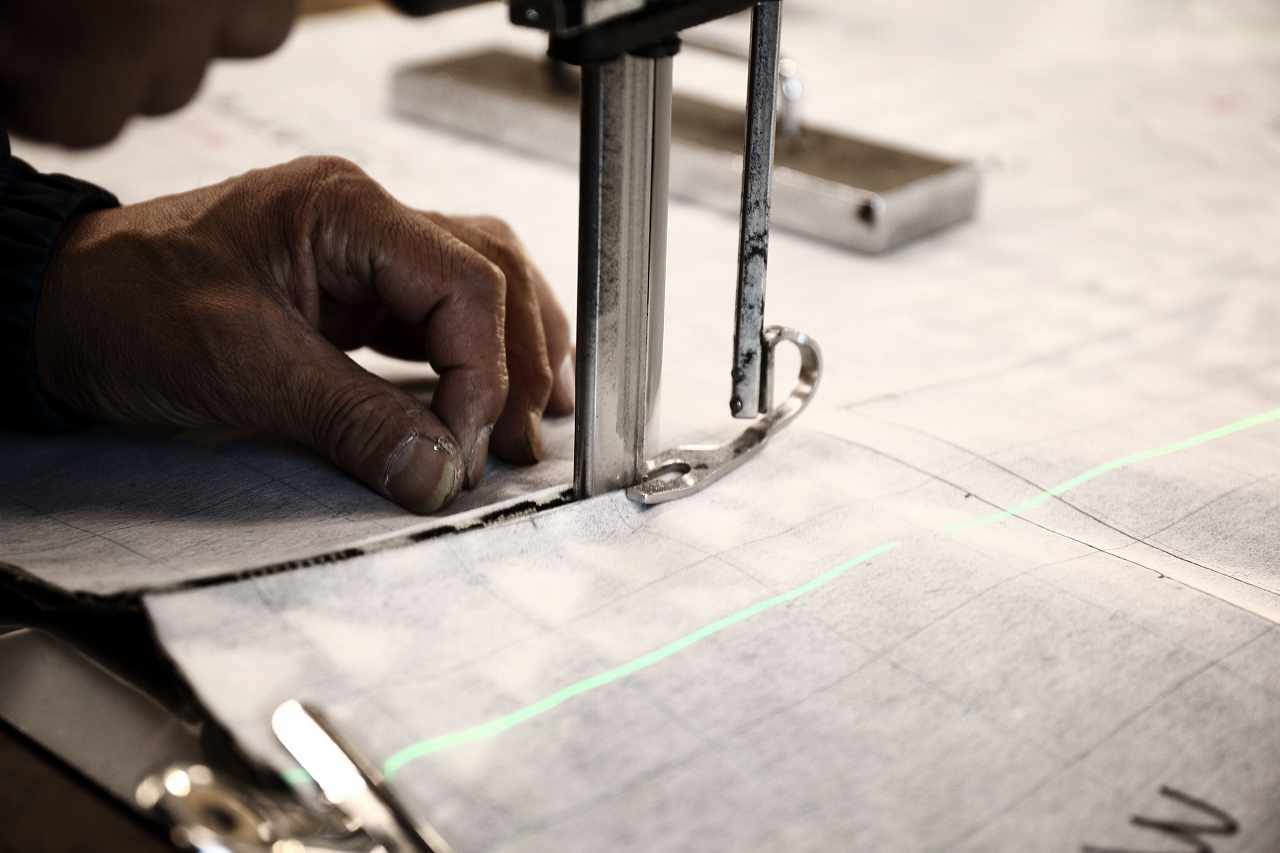
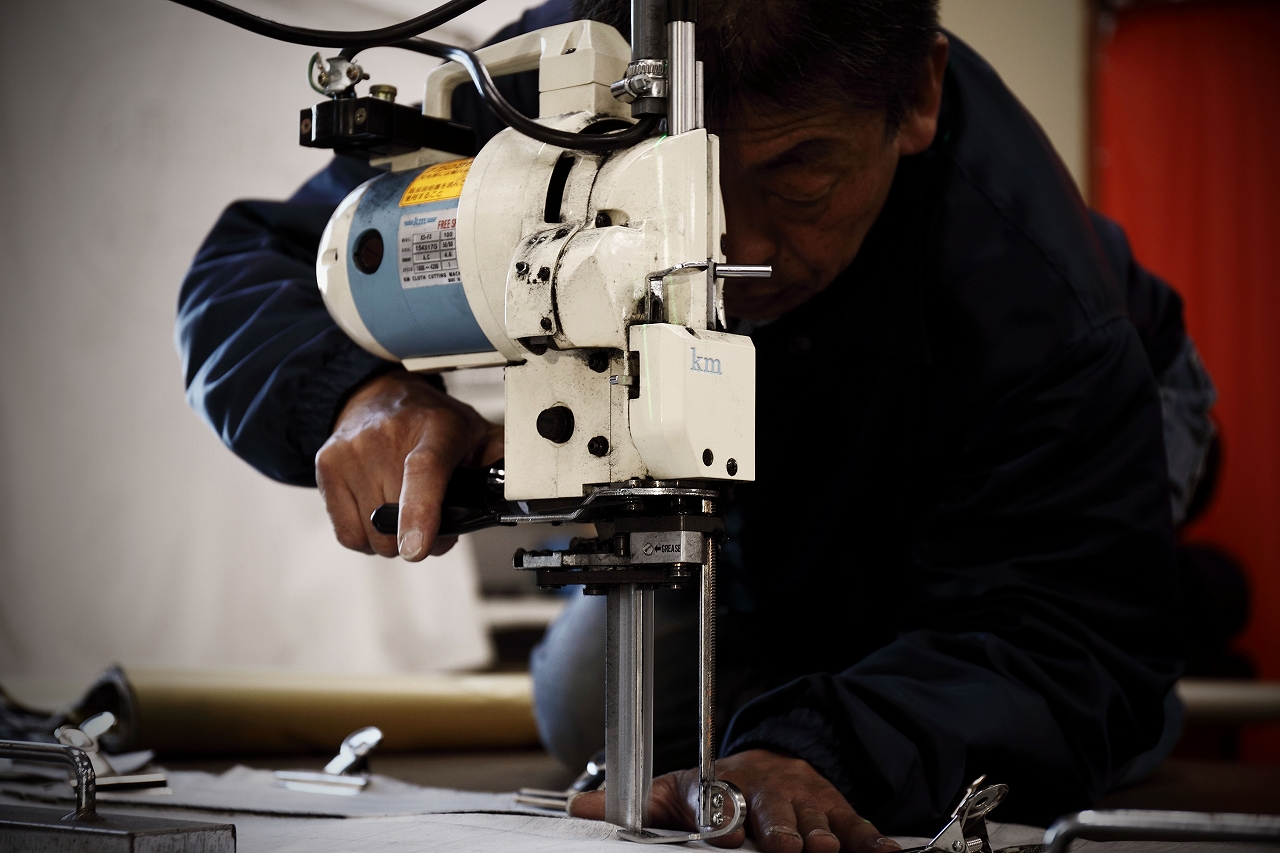
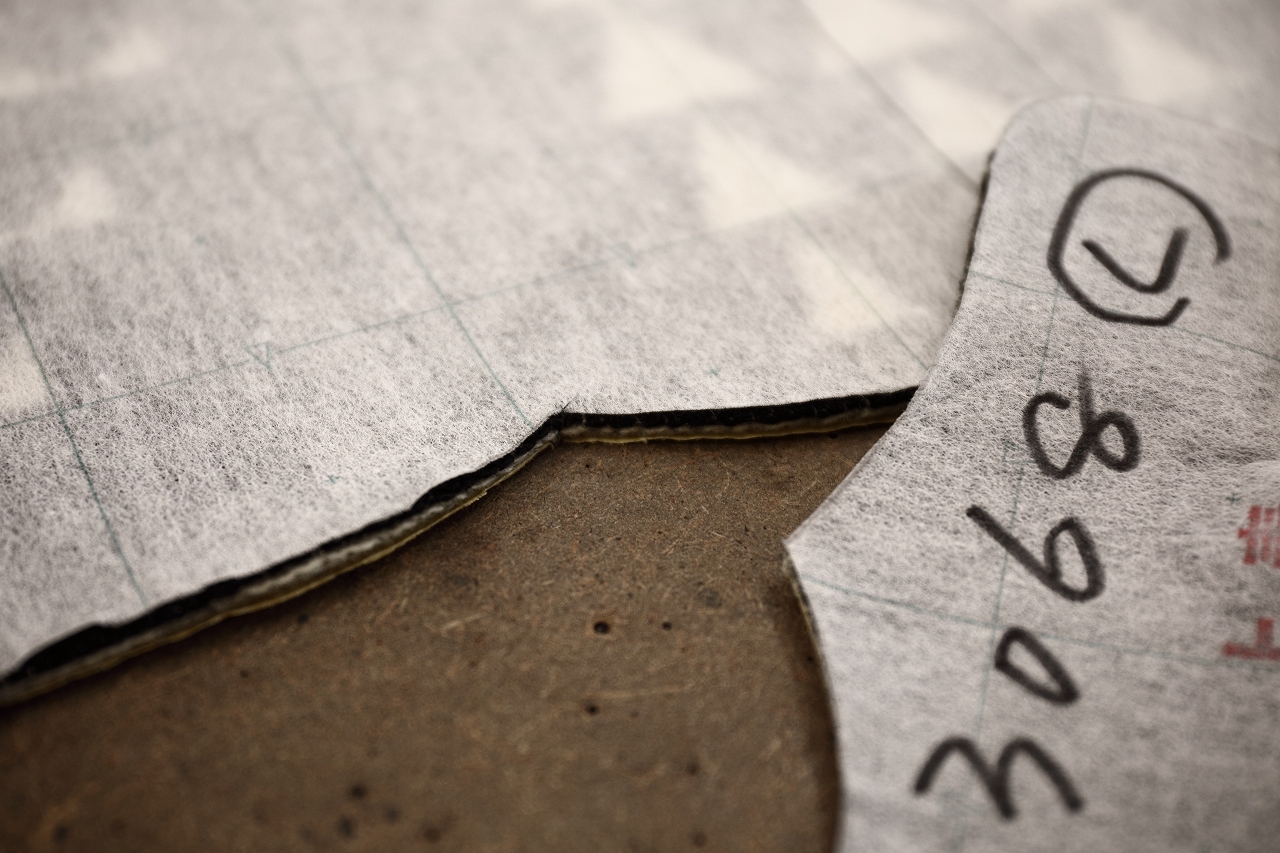
How efficient they can cut, if pattern matching is prioritized, fabric scraps would be created for sure. If you see the size of the scrap in the picture below, you could see how difficult they pursue their belief.
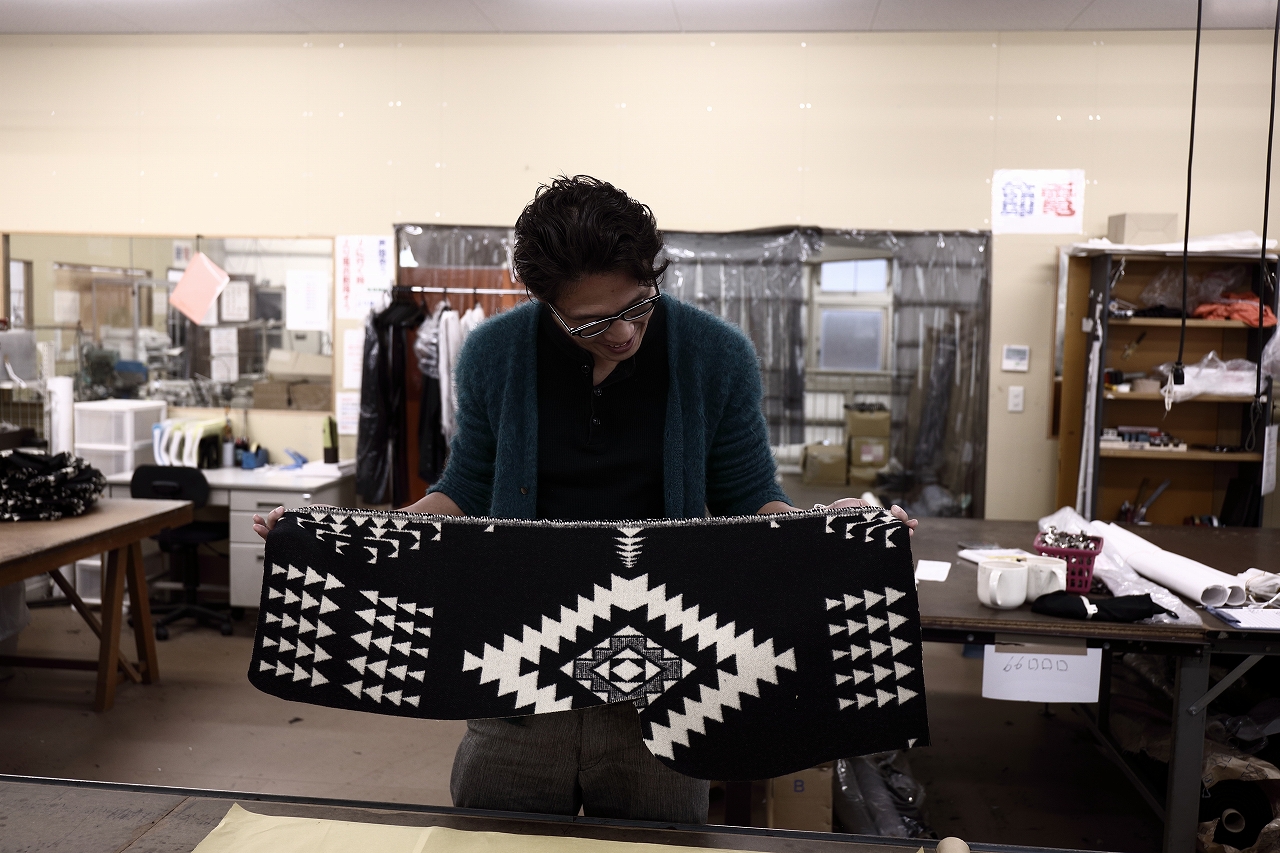
Step.12 “Sewing”
After cutting, the process is transferred to sewing process. At this process, what bothers shokunins is the fabric thickness and pattern matching. For the sewing, There is no surprise that they can’t run their sewing machines fast because they have to consider needles and threads durability. Also since the tensions of front and back sides are becoming different, they need to correct the 3D gaps little by little. Sometimes, they need to hammer the fabric to proceed.
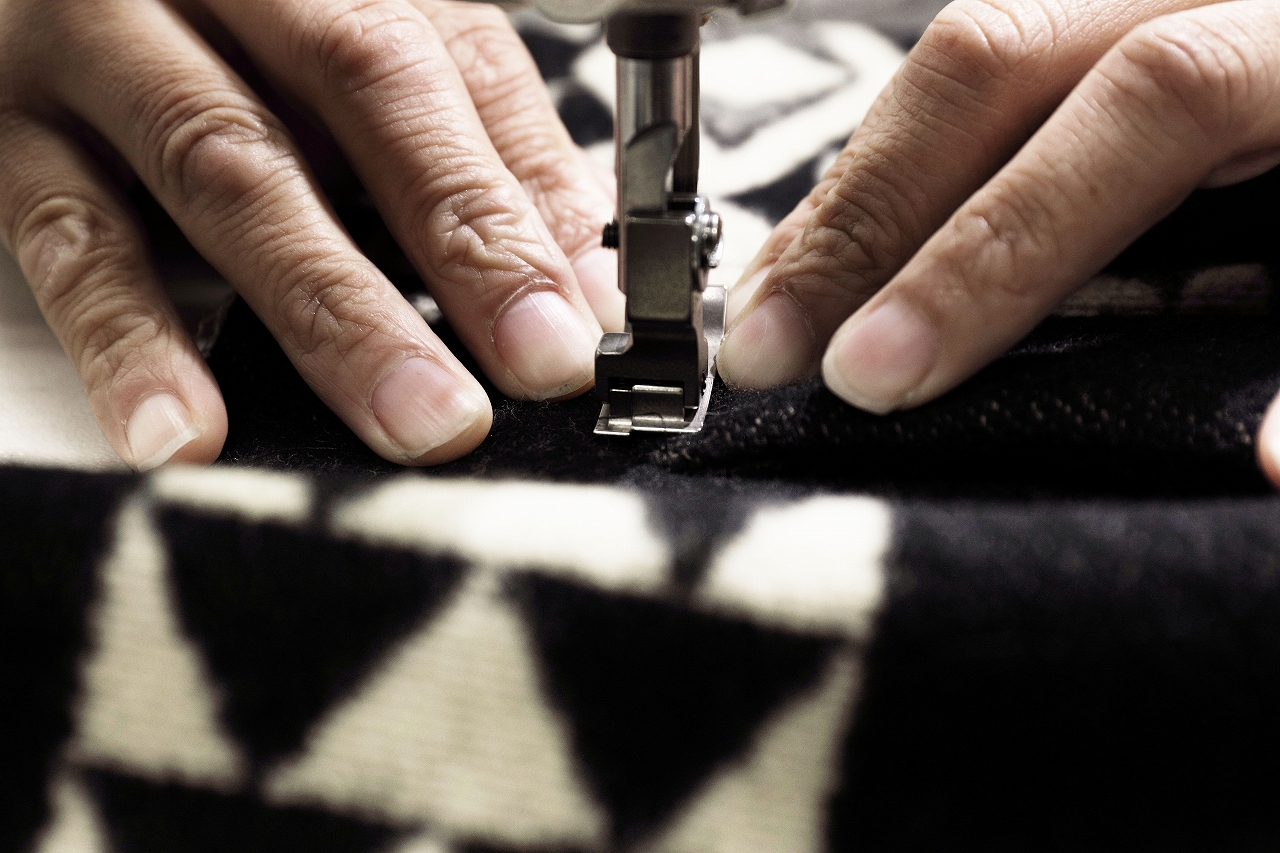
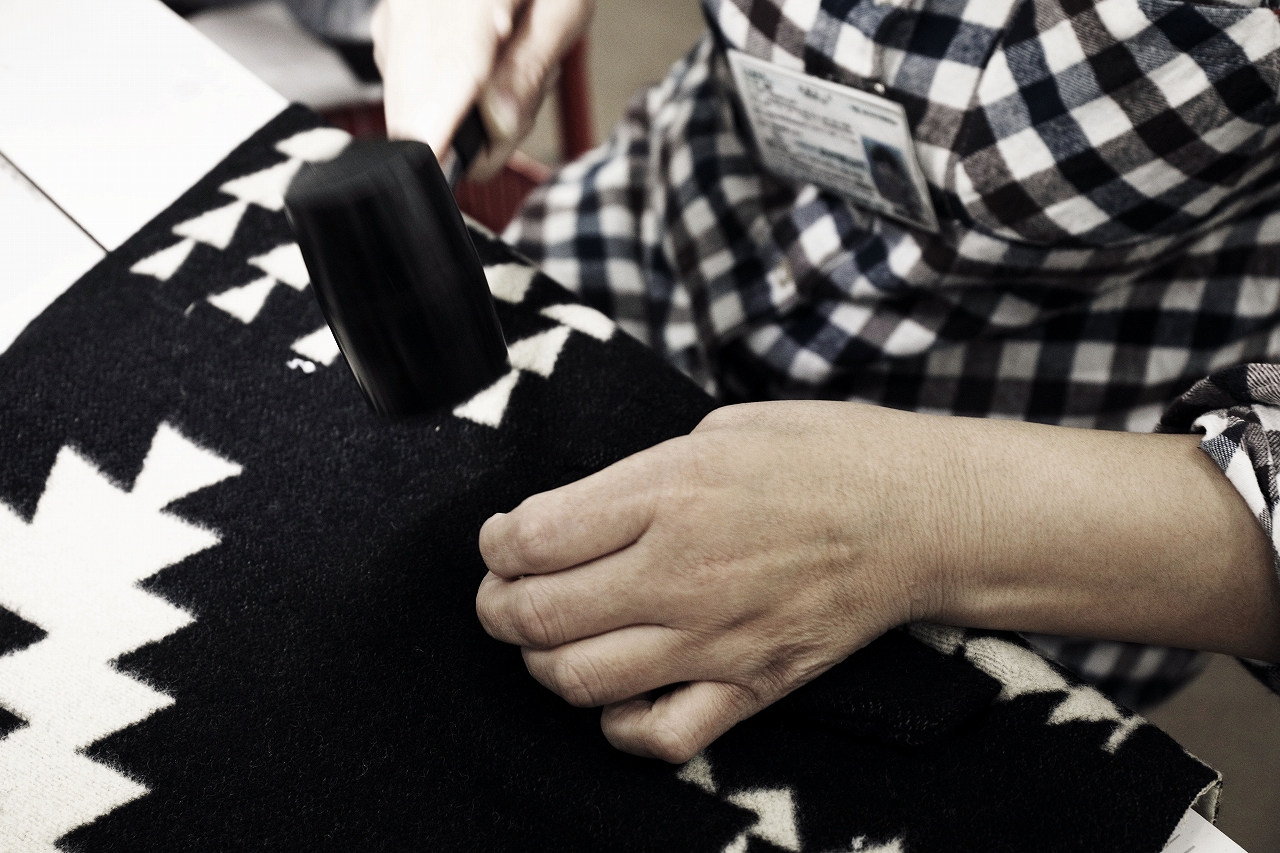
Regarding pattern matching, the most difficult part is where the fabrics get layered such as a pocket. If they prioritize the pattern matching and run the sewing machine, the location of the pocket will be slightly different from the specification. On the contrary, if they only look at the specification, because of tiny wrinkles of the fabric, the pattern won’t be matched well. However, we can’t find those issues in the delivered products because their shokunins’ fine adjustments by their sensitivities which can’t be explained quantitively are applied.
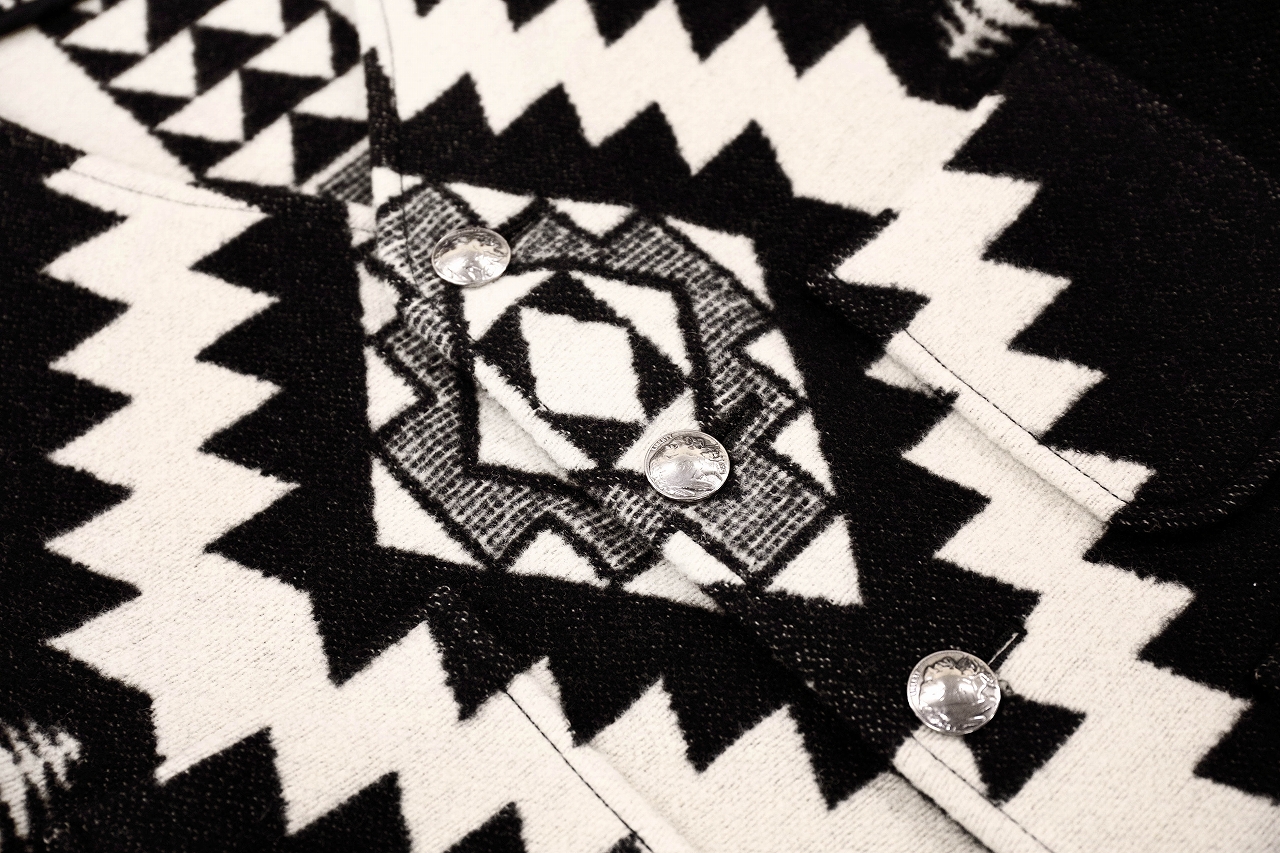
“Specification is just a guideline. Intension of the designer is our blue print.”
“For example, we cut fabric a few mm bigger than the pattern paper to have the ideal margin in consideration of the fabric thickness of the fabric. Also even though a specification says that “the hem needs to be finished by Luis finish”, we finish it by Oku Matsuri finish. there are many cases we conduct different processes from specifications unexpectedly.” said Mr. Yonekura. I doubt the propriety of the word, but a person who designs clothes is only a professional of designing, so they are not professional for cutting and sewing. Our justice is to answer their professionalism with our best as a professional of cutting and sewing. After understanding the intension of the specification, if the directions they gave us are not the best one, we have to tell them about it clearly. I think work conducted by professionals has to be like that.”
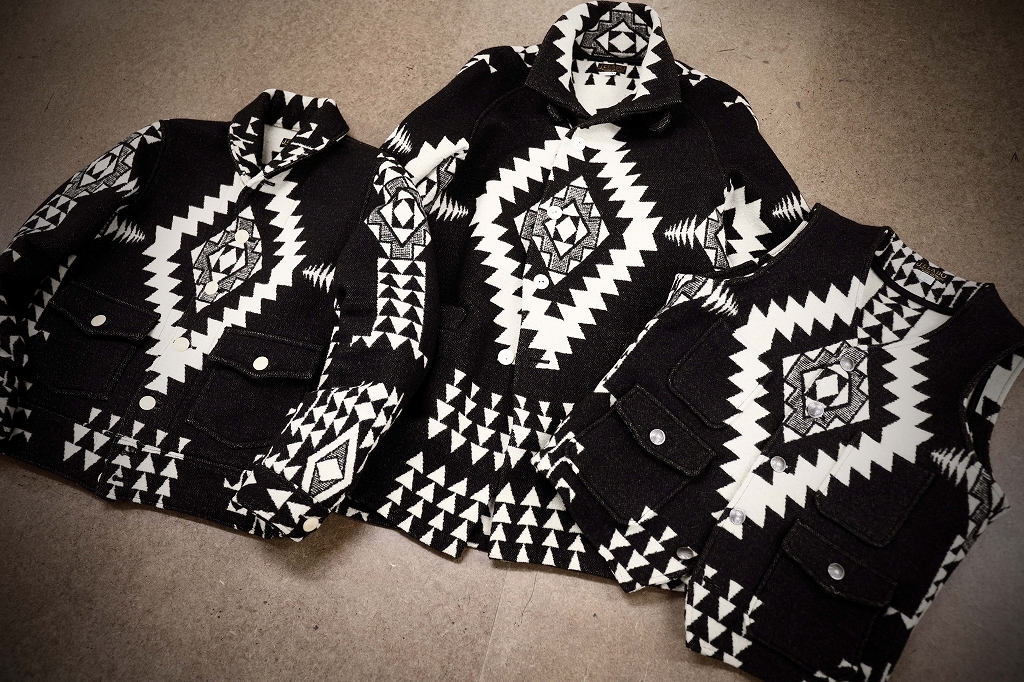
Step.13 "Inspection"
The product that has been sewn is delivered after checking whether there are any lint or needles left. From the spinning process to inspection, the products are produced carefully by human hands one by one until the very end. If you have an opportunity to pick up these products, please think about the production background introduced through this series of reports.
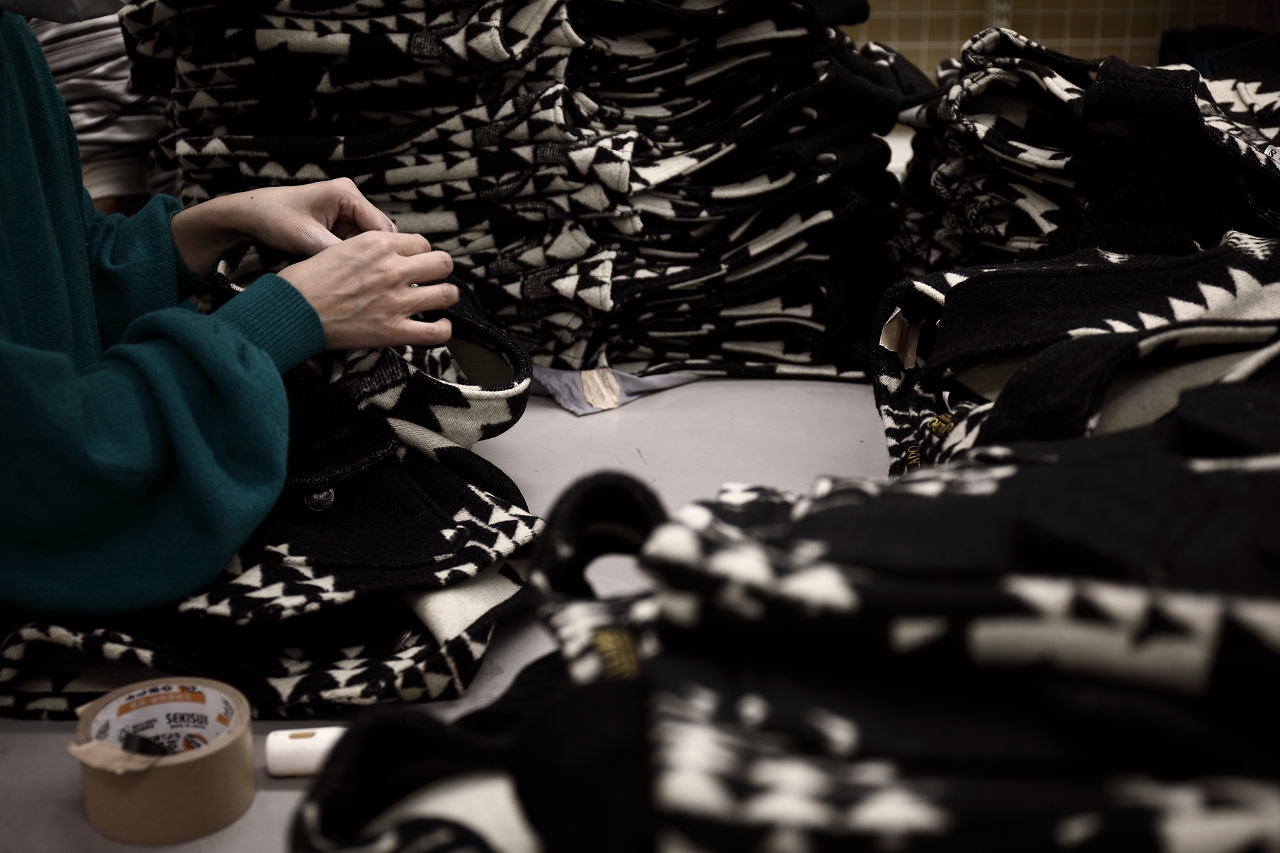
Finally…
There is a reality that Japanese craftmanship is supported by human techniques, not by one enormous technology. It’s sure that there are many cases that machineries work more efficiently and accurately than human work in the world. However, in the field of “culture” including fashion which can’t be measured quantitively, it’s hard to imagine that machineries exceed human’s techniques in the future because the result is obvious if we weigh the costs of human, time and money to invent machineries which exceed human’s techniques, and the possibilities which humans can hand down their expertise and production skills in a balance.
However, factories in Bishu which have such techniques we are introducing in these reports tend to decrease. This is sad reality. In near future, the time which such products we are introducing here can’t be obtained even if we try to get, may come as like American vintage.
It’s important to know this fact first. That’s the precious thing for people who touch the culture. This is what I felt from these reports.
<Writer/Covo Tagata Photographer/Seiji Sawada>














